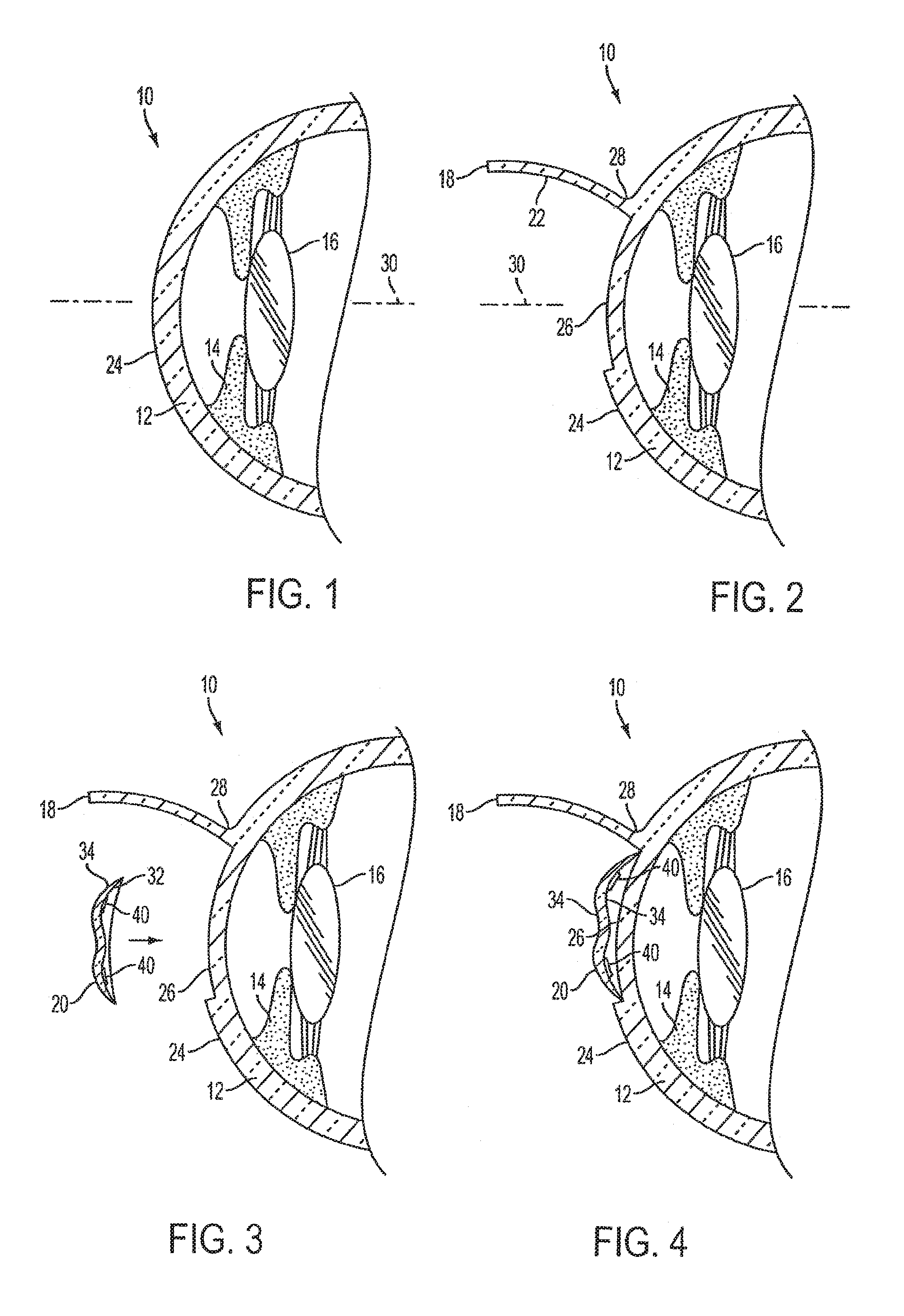Method of altering the refractive properties of an eye
a technology of refractive properties and eye, which is applied in the field of altering the refractive properties of the eye, can solve the problems of inability of the lens and cornea to accurately focus the far point, inability of the astigmatic eye to sharply focus images on the retina, and ametropia, so as to facilitate cross-linking of the tissue bounding the pocket, reduce postoperative pain, and improve the effect of visual clarity
- Summary
- Abstract
- Description
- Claims
- Application Information
AI Technical Summary
Benefits of technology
Problems solved by technology
Method used
Image
Examples
Embodiment Construction
[0021]Accordingly, the present invention is directed to a method of altering the refractive properties of the eye that substantially obviates one or more problems resulting from the limitations and deficiencies of the related art.
[0022]In accordance with one or more embodiments of the present invention, there is provided a method of altering the refractive properties of the eye. The method comprising the steps of: (i) forming a pocket in a cornea of an eye of a patient so as to gain access to tissue bounding the pocket, wherein the forming of the pocket in the cornea of the eye severs some corneal nerves supplying a front surface of the cornea so as to reduce the postoperative pain sensation that is felt by the patient, but does not sever all of the corneal nerves supplying the front surface of the cornea so as to prevent a formation of dry eye in the patient; (ii) after the pocket in the cornea has been formed, applying a photosensitizer inside the pocket so that the photosensitize...
PUM
 Login to View More
Login to View More Abstract
Description
Claims
Application Information
 Login to View More
Login to View More - R&D
- Intellectual Property
- Life Sciences
- Materials
- Tech Scout
- Unparalleled Data Quality
- Higher Quality Content
- 60% Fewer Hallucinations
Browse by: Latest US Patents, China's latest patents, Technical Efficacy Thesaurus, Application Domain, Technology Topic, Popular Technical Reports.
© 2025 PatSnap. All rights reserved.Legal|Privacy policy|Modern Slavery Act Transparency Statement|Sitemap|About US| Contact US: help@patsnap.com



